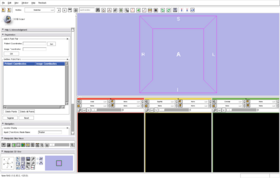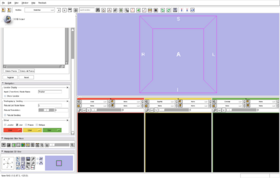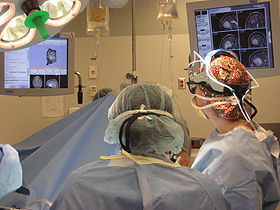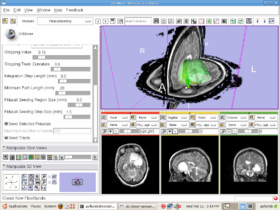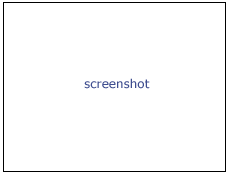Modules:NeuroNav-Documentation-3.6
Return to Slicer 3.6 Documentation
Module Name
NeuroNav
General Information
Module Type & Category
Type: Interactive
Category: IGT
Authors, Collaborators & Contact
- Haiying Liu, BWH
- Nobuhiko Hata, BWH
- Contact: Haiying Liu, hliu@bwh.harvard.edu
Module Description
NeuroNav module is developed to guide neurosurgeons by images to perform surgical procedures in OR.
Usage
Follow the following steps to make the module work properly:
- Connect to a tracking source, which could be a tracking simulator or real tracking device such as NDI Aurora. The tracking source sends tracking data, i.e. the orientation and tip location of the probe, to Slicer at a defined rate.
- Perform patient to image registration. Load preoperative image(s) or scene into Slicer. Choose 4-6 landmarks on the patient head and then find those points on the loaded image to perform the patient to image registration.
- Execute surgical navigation. Navigation is driven by the tracking probe. As long as the probe tip moves within the tracking scope of the device, Slicer will update the image display to give a visual feedback to the neurorsurgeon. The image update will offer useful real-time guidance during the surgical procedure.
Integration with BioImage Suite and BrainLab
Integration of Slicer with BioImage Suite and BrainLab has been a recent successful example of collaboration between academia and industry. BioImage Suite is an integrated image analysis software suite developed at Yale University. BrainLab is an FDA approved neurosurgical navigation system. This integration will interface Slicer to the BrainLab system and allow neurosurgeons to use Slicer to perform some research in DTI visualization in OR while using BrainLab as the navigation system. Please check sections below for details.
Use Cases, Examples
This module is especially appropriate for these use cases:
- Use Case 1:
- Use Case 2:
Examples of the module in use:
- Example 1
- Example 2
Tutorials
Links to tutorials explaining how to use this module:
- Tutorial 1
- Data Set 1
Quick Tour of Features and Use
A list panels in the interface, their features, what they mean, and how to use them. For instance:
|
Development
Notes from the Developer(s)
Algorithms used, library classes depended upon, use cases, etc.
Dependencies
Other modules or packages that are required for this module's use.
Tests
On the Dashboard, these tests verify that the module is working on various platforms:
- MyModuleTest1 MyModuleTest1.cxx
- MyModuleTest2 MyModuleTest2.cxx
Known bugs
Links to known bugs in the Slicer3 bug tracker
Usability issues
Follow this link to the Slicer3 bug tracker. Please select the usability issue category when browsing or contributing.
Source code & documentation
Links to the module's source code:
Source code:
Doxygen documentation:
More Information
Acknowledgment
Include funding and other support here.
References
Publications related to this module go here. Links to pdfs would be useful.
